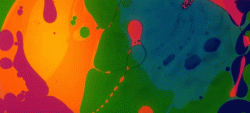Measuring Color Accurately
Consistent and reliable color measurements are sought after by those in R&D, process development, and production. For foods, graphics, paints, and any product that relies on accurate color, this measurement is crucial. Off-colored water is not appetizing. Logos shaded incorrectly influence brand identity.
Hue is the actual color (red, orange, green, etc.) while chroma (saturation) is the vividness or dullness, and lightness is the degree of light. To reproduce a color accurately, find out these three attributes.
Reflectance meters are portable and ideal for a quick pass/fail decisions in a production environment. They assess color quality control for:
- Corporate logo standardization
- Graphic arts testing of inks and control of printed colors
- Standardizing paint colors, plastic colors, and cosmetic colors
- Printing on textiles, packaging materials, and labels
- Color-finishing foods, clothing, pharmaceuticals, and more
Transmittance meters are used to measure color to standardize:
- Beverage color, cooking oils, and more
- Water color
- Chemical finishes
- Petroleum product colors
To maintain color consistency, use color meters or spectrophotometers. These units can measure reflectance or transmittance and avoid subjective color comparisons due to human error.


Comentarios
Publicar un comentario